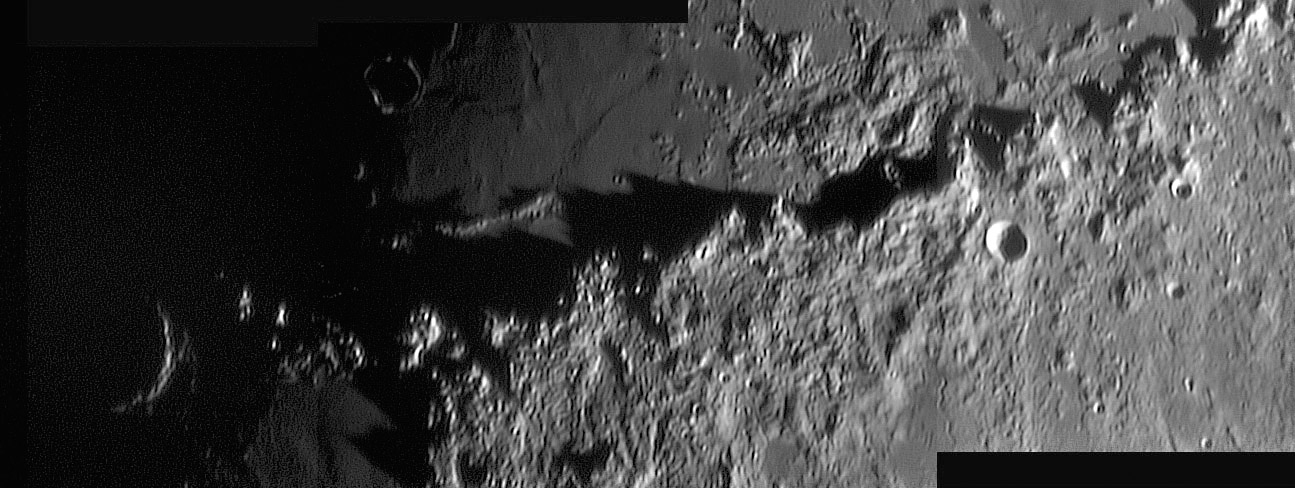image by Achille Giordano, Naples, Italy
The glorious Apennine Mountains are the most dramatic remnant of the rim of the Imbrium impact basin. The 4-5 km thickness of the Apennines is thought to be made of uplift of the terrain surrounding the excavated hole, draped with substantial amounts of fallback ejecta. The ejecta buried pre-existing structures; for example, two possible heavily draped craters are suggested by mounded circles near the bottom mid-right. The ejecta was also embayed by lavas - one patch was erupted from the small Conon Rille, and another exposure fills the low spot of a possible buried crater. These occurances show that the magma must have flowed up through the Apennine Mountains to erupt. The front of mountain range is serrated; the uplift of the Apennines may have originally produced a smooth curve, but the collapses - like terraces - along the front of the uplifted range occurred along fractures at nearly right angles to each other. Presumably the material on the mare at the upper right of the image has collapsed from the Apennines, creating the sharp bright scarp seen in sunset lighting.
Technical Details:
28 November, 2006, 17:04UT. ETX 125 Mak f/15 + 2X Barlow Apo + IR Cut On + Phillips Toucam Pro, mosaic of 3 images with 257 frames each; Registax 4.
Related Links:
Rükl chart 22
Yesterday's LPOD: Which Way is Up?
Tomorrow's LPOD: Dark Mare, Bright Rims
COMMENTS?
Register, and click on the Discussion tab at the top of the page.
Contributions to http://www2.lpod.org/ are licensed under a Creative Commons Attribution No-Derivative-Works Non-Commercial 3.0 License. 




